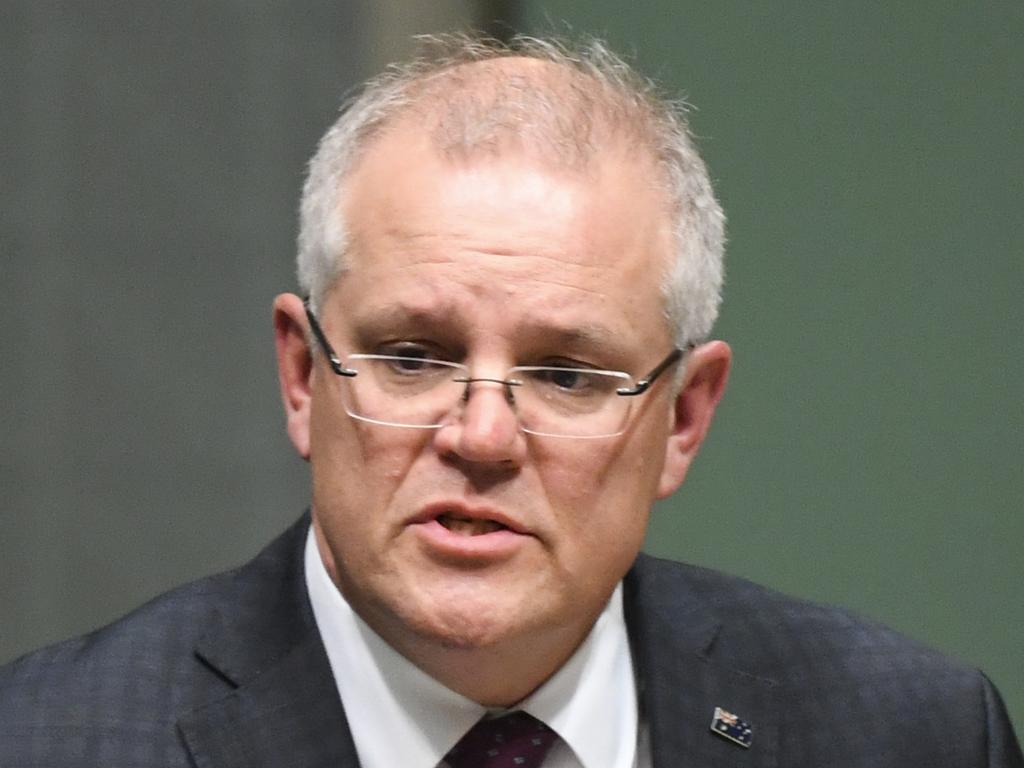Missing port link makes mockery of $10bn Inland Rail project
Instead, the planned 1700km line between Brisbane and Melbourne threatens to be a gigantic white elephant. The rail link, first proposed more than a century ago, has a fundamental flaw – the Brisbane end of the line doesn’t go anywhere near the city’s port, instead terminating in the middle of the southern suburbs.
That defeats its main purpose, to get trucks off our increasingly busy roads and make rail a viable alternative to move goods to global markets. Only 2 per cent of freight to the port currently goes by rail from 13 per cent in 2006, a failing Inland Rail was supposed to remedy.
A recent Senate inquiry into Inland Rail has revealed a litany of issues with the project, much of it focused on the bureaucratic buck passing over the failure to plan for a Brisbane Port link.
It beggars belief that planners could even envisage starting work on a project the size of Inland Rail without finalising where one end of it would finish.
Fans of the ABC comedy Utopia, which focuses on the ludicrous machinations of a fictional infrastructure body, find plenty of similarities in the way Inland Rail is being managed by the Australian Rail Track Corp.
The project has become somewhat of a joke in investment circles – one Brisbane broker left an ARTC briefing on the project a few years back with the phrase “pig might fly” on his lips.
Unfortunately for Australia, cheap and cheerful have become the norm for how we manage the few truly nation-shaping infrastructure projects we have managed to get off the ground. The lack of a port connection is not the only problem with Inland Rail – a shorter, straighter route requiring brand new tracks was ruled out in favour of a cheaper version using largely existing tracks.
That means Inland Rail is very much a budget version of what could have been built. But the missing link to the port is the most fundamental flaw, akin to anchoring a huge ship offshore and using rowing boats to load the cargo.
The Port of Brisbane told a Senate inquiry this year that relying on road transport to take freight the last 38km to the waterfront would not only put thousands of heavy trucks on suburban roads but apply a “handbrake to Australia’s export potential to Asian markets”.
Port of Brisbane handles more than a million containers each year, with the potential to handle substantially more if a dedicated rail line is constructed as part of Inland Rail.
The measly amount of freight currently going by rail to the port uses an old line that has to share capacity with passenger trains and that is subject to emergency shutdowns and maintenance. The Port of Brisbane was forced to spend more than $100m a few years ago to upgrade the main road to the port as the increasing reliance on trucks meant the existing route was becoming dangerously congested.
Port of Brisbane chief executive Roy Cummins told the Senate inquiry that setting aside land for a dedicated corridor to the port was essential if the business case for rail was to be prosecuted successfully. The current inefficiency and expense of the rail network as opposed to the competitiveness of road transport means trucks win out every time.
Confidence in Inland Rail to deliver cheaper rail services is in serious doubt.
Queensland farmers, who might have been enticed to use Inland Rail, complain it would be cheaper and quicker to truck crops to Sydney and Melbourne than use the line to Brisbane.

A feasible solution to the missing link has been staring planners in the face for years but has been ignored for reasons unknown.
The National Trunk Rail consortium has called for the construction of two 8km tunnels from the Acacia Ridge intermodal depot to the port through the nearby Pine Mountain Quarry.
Port Connex is backed by top international rail engineer Hans-Peter Vetsch, who helped build the 57km Gotthard Base Tunnel under the Swiss Italian Alps. He has argued that tunnelling is not only feasible, but the only option if Inland Rail is to succeed.
A recent Deloitte Access Economics report found that increasing the amount of freight to the port via rail to 30 per cent would mean 2.4 million fewer truck movements, $195m in reduced congestion costs and $155m in reduced road maintenance costs. It also would pump an extra $5.4bn into the regional economy in the years to 2045.
Jon Grayson, a former director-general of the Department of Premier and Cabinet in Queensland and a former National Trunk Rail board member, points out that a dedicated freight link to the Port of Brisbane has been recognised at all three levels of government as a “critical project”.
“Infrastructure Australia has identified it as high priority,” Mr Grayson told the Senate inquiry.
Yet a feasibility study on the connection, completed in 2019 and jointly funded by both state and federal governments, lies languishing at the bottom of a drawer in the Queensland bureaucracy.
Unfortunately, the Inland Rail appears to reveal fundamental flaws in our national character when it comes to big infrastructure – go for the cheapest option and pass the buck where possible.
Australia’s response to the COVID-19 pandemic shows we are very good at crises that require inaction – we are brilliant at shutting things down.
Yet when it comes to action and getting things moving, we are absolutely hopeless. The dream of building the inland rail dates back more than a century in Australia.
Proposals for a Melbourne-Queensland-Darwin railway were first mooted soon after Federation, and in 1915 prime minister Andrew Fisher proposed a railway from the Riverina to Queensland. However, what seemed perfectly feasible for an early 20th century politician appears beyond our current crop of 21st Century leaders.





The $10bn Inland Rail project should be our proudest piece of nation building since the Snowy Mountains Scheme.